It looks like you're using an Ad Blocker.
Please white-list or disable AboveTopSecret.com in your ad-blocking tool.
Thank you.
Some features of ATS will be disabled while you continue to use an ad-blocker.
share:

Yesterday I was researching material for another thread and reviewing the chronicles of Inca Garsilaso de la Vega, "Comentarios Reales de los Incas". I had to stop my research at the first pages of the second book. I found this intriguing story.
The Incas in Cusco had a cross of fine marble, white and flesh color, called crystalline jasper: they don't know since what time they have it.
According to Garcilaso, he saw it in 1560 in the sacristy of the cathedral church of that city, hanging on a nail with a string coming through a hole on the top of the head. Obviously relocated there by the Spaniards, they probably thought that will help to convert the locals to Catholicism.
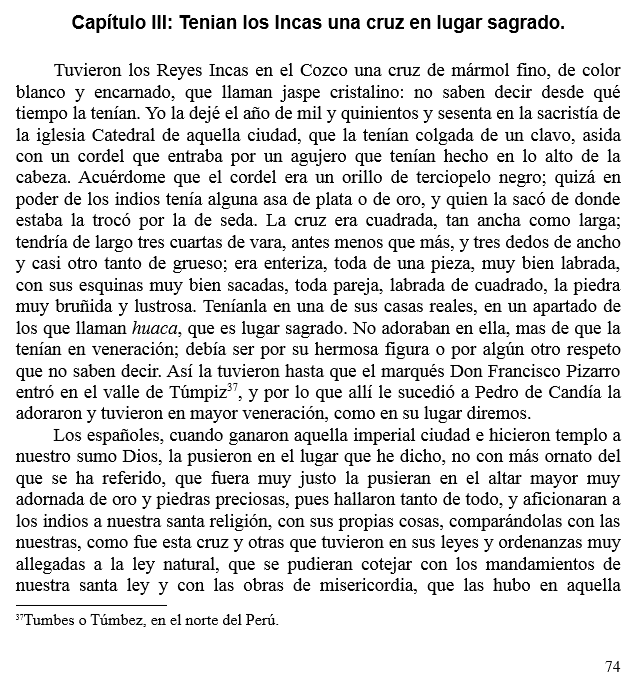
He described the size of cross very well and that can suggest that the cross could be related to another civilization, maybe we found something unexpected. Nordic nations used that cross and still today it's present in their flags but also much older cultures used it too.

The writer described a hole in the head of the object, he assumes that hole was made to hang the cross on the wall but he really can't tell if the hole was part of the original design of the object, since it was already hanging on the wall when he saw it. Of course, that will make us think about the Ankh, but the symmetry of the object doesn't seem to match with the Egyptian cross.
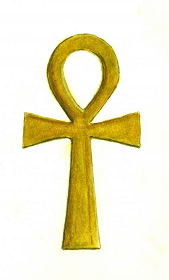
The cross was square, as wide as long (symmetrical); three quarters of vara long (1 vara = 33 inches/84 cm.), and three fingers wide and nearly as much coarse; was integral, all of a piece, very well dressed, with their corners very well taken, every couple, carved square, stone very polished and shiny.
The material used to make the cross could be a key to help us to reveal what is behind this mysterious object. Garcilaso says it was made of white marble. I was lucky this time and found a match, a very interesting one.

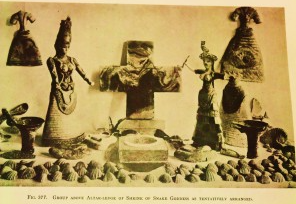
One important detail about the material decribed by the writer, he said "white" marble. I couldn't find a match for that in the area, but who knows, it's such a vast area.
Anyway, for some reason this made me think about Phoenicians. Actually, there was a theory about Phoenicians in America before Columbus and even Mormons have a similar idea, I have no authority to deny it and rather leave it as a possibility.
Now, this is important : He also gives some interesting details of the religious context of the object. the previous location of the cross was a "Huaca", a sacred place. Garsilaso says that the Incas didn't worship it, but they considered it an object with deserved reverence for some reasons they couldn't say.
For me it means the object belonged to someone not from the empire, an outsider. Someone so ancient that not even the Incas knew or could give detailed references.
I wonder where is the cross now.
shemer.mslib.huji.ac.il...
cominganarchy.com...
en.wikipedia.org...
potnia.theladyofthelabyrinth.com...
edit on 19-12-2015 by Trueman because: (no reason given)
Another mysterious cross which has always fascinated me is the Hendaye cross.. Especially with its mysterious symbols..
a reply to: Trueman
Are you sure it was resembling a christian or Ank cross? The Inca's had a cross of their own called the Chakana you know, this is what Garcisalo de la Vega supposedly recorded in his accounts. Here is a picture of one with a hole in the top for hanging it too:

-MM
Are you sure it was resembling a christian or Ank cross? The Inca's had a cross of their own called the Chakana you know, this is what Garcisalo de la Vega supposedly recorded in his accounts. Here is a picture of one with a hole in the top for hanging it too:

-MM
edit on 19-12-2015 by MerkabaMeditation because: (no reason given)
edit on 19-12-2015 by MerkabaMeditation because: (no
reason given)
edit on 19-12-2015 by MerkabaMeditation because: (no reason given)
originally posted by: MerkabaMeditation
a reply to: Trueman
Are you sure it was a christian looking cross? The Inca's had a cross of their own called the Chakana you know, this is what Garcisalo de la Vega, el Ynga supposedly saw. Here is a picture of one with a hole in the top for hanging it too:
-MM
Sure I know the Chakana, I made a thread about it.
THE CHAKANA and THE QAPACÑAN - Sacred Math and more
In this case, I believe the Chakana doesn't match.
edit on 19-12-2015 by Trueman because: (no reason given)
originally posted by: Trueman
In this case, I believe the Chakana doesn't match.
The cross was used by pretty much every ancient culture on earth. Pretending that it has some other civilisation significance without evidence isn't how you do history...
For instance Garcilaso de la Vega was a half native and half Spanish and was born 30 years after the conquistadores landed in the new world, the son of a Spanish captain and Inca priestess, who left the country for good for Spain at the age of 21. So you have 50+ years for a Christian cross that the Spanish brought with them to have been acquired by the Inca. Who would have recognised its spiritual significance, but who wouldn't have worshipped it themselves
Dna can reveal quite a lot of how people used to travel. For example my DNA reveals that i have Indian blood ( archaic Clovis and Kennewick man and a
bit southern Peru Indian which is not that old as two previous archaic matches ) totally i have 4% of Indian blood and only way i can link these to me
is Viking roots. What was more surprising is that my father has 5% Indian blood and he is born from Norwegian and German parents and his genetic
makeup says that 3% is from Peru and 2% northern America.
Anyway i totally courage people to find out their genetical makeup and joining in research like national geographics Geno2. There are still a lot we can find out of our past.
(ps. I am finnish/ swedish/ norwegian.. in this order lol )
Anyway i totally courage people to find out their genetical makeup and joining in research like national geographics Geno2. There are still a lot we can find out of our past.
(ps. I am finnish/ swedish/ norwegian.. in this order lol )
edit on 19-12-2015 by dollukka because: (no reason given)
a reply to: Marduk
If I understood well, in page 74 Garsilaso mention Tumbes as the original location of the cross, the place of the" Huaca".
Tumbes is all the way up to the north of Peru, next to Ecuador.
Seems like the Spaniards found it there and moved to Cuzco.
If I understood well, in page 74 Garsilaso mention Tumbes as the original location of the cross, the place of the" Huaca".
Tumbes is all the way up to the north of Peru, next to Ecuador.
Seems like the Spaniards found it there and moved to Cuzco.
a reply to: Trueman
Geno 2 project
For geneology research you can upload your GENO results to FamilytreeDNA ( for free ) or buy kit from there. Also you can upload your DNA results to gedmatch to find out even more of your past.
Gedmatch
There are many archaic DNA sample uploaded to gedmatch and you can do your own research of your genetical makeup using free tools there.
y-str.org
Geno 2 project
For geneology research you can upload your GENO results to FamilytreeDNA ( for free ) or buy kit from there. Also you can upload your DNA results to gedmatch to find out even more of your past.
Gedmatch
There are many archaic DNA sample uploaded to gedmatch and you can do your own research of your genetical makeup using free tools there.
y-str.org
a reply to: Trueman
Very interesting! The cross was equilateral, which means it sounds more like a Roman cross than an ankh. It could have been something like this (hole and all, seen it a million times in Catholic churches):
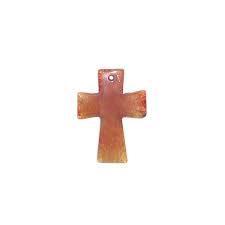
I agree with Marduk, by the time Garcilaso saw the cross the Spanish had been in the continent for almost 70 years, plenty of time for the incas to have found and kept a Catholic cross.
Very interesting! The cross was equilateral, which means it sounds more like a Roman cross than an ankh. It could have been something like this (hole and all, seen it a million times in Catholic churches):

I agree with Marduk, by the time Garcilaso saw the cross the Spanish had been in the continent for almost 70 years, plenty of time for the incas to have found and kept a Catholic cross.
edit on 19-12-2015 by Agartha because: Spelling!!!
originally posted by: dollukka
Dna can reveal quite a lot of how people used to travel.
www.livescience.com...
Several companies now claim that for as little as $100 and a swab of the inner cheek, they can reveal a person's family tree and ancestral homeland.
But more than a dozen scientists from various backgrounds say such "recreational genetics" or "vanity tests" have significant scientific limitations and rely on misconceptions about race and genetics.
originally posted by: Trueman
a reply to: Marduk
If I understood well, in page 74 Garsilaso mention Tumbes as the original location of the cross, the place of the" Huaca".
Tumbes is all the way up to the north of Peru, next to Ecuador.
Seems like the Spaniards found it there and moved to Cuzco.
Tumbes was first visited by Spanish conquistador Francisco Pizarro during the start of the Spanish conquest of the Inca Empire in 1528.[2]:119-123 Pizarro made a second expedition in 1532 during which he encountered resistance from the curaca (chieftain) Chilimaza in what became known as the Battle of the Manglares. Pizarro was eventually successful and is said to have planted a cross in the invaded territory as a sign of Hispanic victory. Felipillo and Yacané, the first South American Indigenous interpreters who later aided Pizarro and his followers during the conquest of Peru, were born in Tumbes.
originally posted by: Agartha
a reply to: Trueman
I agree with Marduk, by the time Garcilaso saw the cross the Spanish had been in the continent for almost 70 years, plenty of time for the incas to have found and kept a Catholic cross.
That should be analyzed carefully. Garsilaso gives us an estimated date when the cross was moved to Cuzco, he said Pizzarro was entering to the Tumpiz Valley (Tumbes). No conquistador was there 70 years before that.
- Garsilaso saw the cross in Cuzco in 1560.
- In 1532 Pizarro arrived to Tumbes, no Spaniards in Cuzco.
- In 1533 Pizarro entered in Cuzco.
That means the 70 years time frame suggested is not accurate.
Interesting note : The Cathedral of Cuzco building was completed in 1654. It was still under construction when Garsilaso saw it.
It also results hard to believe the Spaniards carried the marble cross all the way to Cuzco if you take a look :
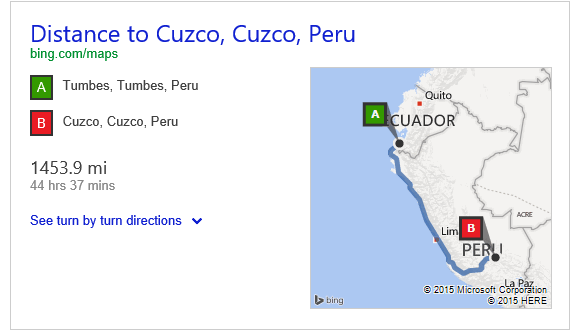
originally posted by: Trueman
That means the 70 years time frame suggested is not accurate.
Yup, its more like 30 years
So that's 30 years since Pizarro planted his own cross at Tumbes
30 years for the defeated Inca to make their own versions
or 30 years for Pizarros cross to have sat there until it was moved to Cuzco
Pizarro was eventually successful and is said to have planted a cross in the invaded territory as a sign of Hispanic victory
a reply to: Marduk
Thanks Marduk, great contribution.
But I'm not sure if that is a valid support if you suggest the cross was carried all the way to Cuzco. The fact that Felipillo and Yacane were from Tumbes is purely accidental. Tumbes is the first place Pizzarro was when he started his conquest. Obviously it has to be the place where he got the guides and interpreters.
I'm not saying you are wrong, but must provide more solid support in this case.
Thanks Marduk, great contribution.
But I'm not sure if that is a valid support if you suggest the cross was carried all the way to Cuzco. The fact that Felipillo and Yacane were from Tumbes is purely accidental. Tumbes is the first place Pizzarro was when he started his conquest. Obviously it has to be the place where he got the guides and interpreters.
I'm not saying you are wrong, but must provide more solid support in this case.
originally posted by: Trueman
a reply to: Marduk
How do you know Pizarro's cross was made of white marble?
I don't think it was Marble, because the entire region is rich in white Alabaster, which was used since colonial times by native craftsmen to manufacture religious icons
www.go2peru.com...
Why not a cross. After all they built pyramids down there just like some of them in Egypt and other countries in that area. Now what are the chances
of two separate cultures having pyramids with none found up by the land bridge where they were supposed to chase mastodons over to America.
The people two thousand years ago had ships that could have gone across the Ocean. They were smart, there are records of using currents to form trade routes, some people were curious as to where these currents might lead them.
The people two thousand years ago had ships that could have gone across the Ocean. They were smart, there are records of using currents to form trade routes, some people were curious as to where these currents might lead them.
originally posted by: Marduk
originally posted by: Trueman
a reply to: Marduk
How do you know Pizarro's cross was made of white marble?
I don't think it was Marble, because the entire region is rich in white Alabaster, which was used since colonial times by native craftsmen to manufacture religious icons
www.go2peru.com...
Those examples are from Ayacucho, which is about half way to Cuzco. Too far from Tumbes. I don't think he order a cross from Ayacucho's craftmen. Amazon Rainforest wasn't Amazon Prime. Hehehe....
The cross Pizarro used had to be something more simple and easier to carry, cheap stuff like wood maybe. Remember this guys were hungry of anything with value.
edit on 19-12-2015 by Trueman because: (no reason given)
new topics
-
Let's talk planes.
General Chit Chat: 7 hours ago -
January 6th report shows disturbing trend (nobody is shocked)
US Political Madness: 9 hours ago -
Inexplicable military simulation - virtual reality showdown in the night..
The Gray Area: 9 hours ago -
The Truth about Migrant Crime in Britain.
Social Issues and Civil Unrest: 10 hours ago
top topics
-
Trudeau Resigns! Breaking
Mainstream News: 12 hours ago, 26 flags -
January 6th report shows disturbing trend (nobody is shocked)
US Political Madness: 9 hours ago, 20 flags -
Live updates: Congress meets to certify Trump's presidential election victory
US Political Madness: 13 hours ago, 12 flags -
The Truth about Migrant Crime in Britain.
Social Issues and Civil Unrest: 10 hours ago, 10 flags -
Gravitic Propulsion--What IF the US and China Really Have it?
General Conspiracies: 14 hours ago, 9 flags -
Let's talk planes.
General Chit Chat: 7 hours ago, 5 flags -
Greatest thing you ever got, or bought?
General Chit Chat: 14 hours ago, 4 flags -
Inexplicable military simulation - virtual reality showdown in the night..
The Gray Area: 9 hours ago, 2 flags
active topics
-
Judge rules president-elect Donald Trump must be sentenced in 'hush money' trial
US Political Madness • 32 • : WeMustCare -
January 6th report shows disturbing trend (nobody is shocked)
US Political Madness • 50 • : RazorV66 -
Gravitic Propulsion--What IF the US and China Really Have it?
General Conspiracies • 16 • : YouSir -
Trudeau Resigns! Breaking
Mainstream News • 65 • : firerescue -
Greatest thing you ever got, or bought?
General Chit Chat • 21 • : rickymouse -
Islam And A Book Of Lies
Religion, Faith, And Theology • 12 • : nugget1 -
Trump says ownership of Greenland 'is an absolute necessity'
Other Current Events • 65 • : BingoMcGoof -
Let's talk planes.
General Chit Chat • 7 • : rickymouse -
Democrats Introduce Bill That Will Take Away Donald Trumps Secret Service Protection
2024 Elections • 77 • : WeMustCare -
OK this is sad but very strange stuff
Paranormal Studies • 8 • : rickymouse
